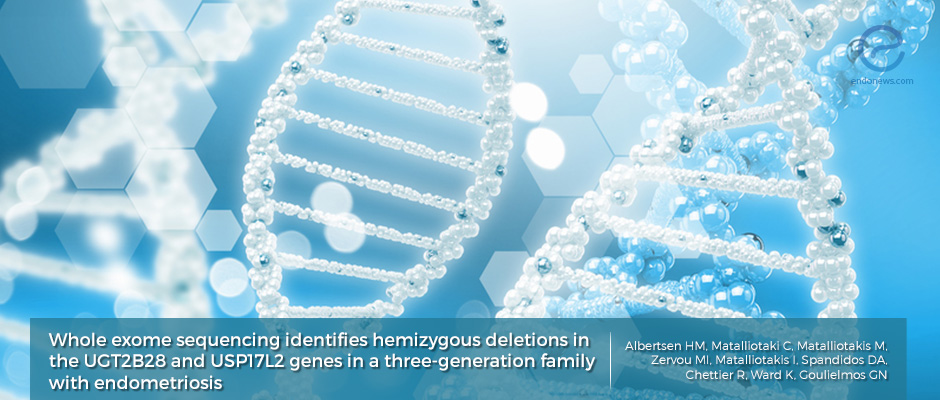New Link Between Endometriosis and Genetics?
May 15, 2019
Insights from a three-generation family with endometriosis
Key Points
Highlights:
- Researchers identified two new genes that may be associated with endometriosis
Importance:
- The finding further enhances our understanding of the biology of this disease and could help researchers identify new ways of treatment.
What's done here:
- Researchers used a technique called whole exome sequencing to analyze the DNA of seven women with endometriosis of the same family.
Key results:
- They found two hemizygous deletions in the UGT2B28 and USP17L2 loci that were present in the genome of all seven women.
Limitations:
- The study does not provide any information about the mechanism by which these loci may be involved in the development of the disease and further research is needed to understand the role they may play in order to be able to design new strategies towards treating the disease.
Lay Summary
Two new genes have been identified that may be associated with endometriosis. This finding increases our understanding of the biology of endometriosis and may take us one small step further towards the development of new ways of treating the condition.
Endometriosis is a complex condition, the cause of which is not fully understood. Researchers think that an interplay between genetic and environmental factors may be causing the condition.
Genome-wide association studies (GWAS) have identified a number of genes that may indeed be playing a role in the development of the disease. GWAS try to identify genes involved in a particular disease by looking at small changes in the DNA that may occur more frequently in the genome of people with that particular disease compared to the general population.
In the present study, a team of researchers led by Dr. George N. Goulielmos at the University of Crete in Greece identified two new genes, UGT2B28, and USP17L2 as potentially playing a role in the development of endometriosis. The study recently published in the journal "Molecular Medicine Reports".
The team had previously described the case of a three-generation Cretan family where a woman, her three daughters, and three granddaughters all had endometriosis. Here, they used a technique called whole exome sequencing where they sequenced or “read” the sections of the whole of the women’s DNA that encode for a protein (there are also long sequences in the DNA that do not encode for protein).
When they looked at the 14 genes that were previously identified as being linked to the development of endometriosis, the researchers did not find any variation that could be associated with the disease. However, when they took a closer look at the women's DNA, the researchers saw that there were two pieces missing in one of the two copies of two genes in the DNA of the grandmother. These were in the UGT2B28 and USP17L2 genes, and the same pieces were also missing in the DNA of her daughters and granddaughters, all of whom had endometriosis.
“On the whole, the findings of the present study implicate two additional genes in the pathogenesis of endometriosis, apart from those already identified by GWAS”, the researchers wrote. The underlying mechanism of how these genes may be affecting disease development remains unknown.
Research Source: https://www.ncbi.nlm.nih.gov/pubmed/30628680
genetics GWAS whole exome sequencing UGT2B28 USP17L2

